As I continue my journey toward exposing my urban middle school students to more art, there are a few questions that must be addressed. What constitutes art? Paintings and sculpture, both classic and modern, should easily qualify. I don’t think it requires a great cognitive leap to include opera and dance as well. Should I include film, photography, and architecture as well? Do they meet the criteria? What about fashion and music? Again the issue of editing. By selecting certain pieces or mediums, I am necessarily excluding others, limiting access. But time constrictions require condensation so I must edit. Consequently, I have made the decision to include less traditional art as well as the tried and true classics. It is never certain which pieces or mediums will speak to a person’s mind,soul or experience. A glimpse into an alternative view may awaken the senses or promote introspection.
Recently I watched a video installation Diderot’s Dream by Zbyněk Baladrán at MOMA. It was quite arresting. Against a backdrop of images of the cosmos, were images of scenes on earth. Throughout the video there is an ongoing dialogue between two unseen entities; Baladran and Diderot? Admittedly I didn’t understand all of the video, actually I didn’t understand a lot of it, however it echoes in my memory. Several weeks later the images and dialogue continue to provoke thought and reflection. Isn’t that art? If so, is an 8th grade Bronx student prepared for that type of experience? Is understanding a requirement in order to benefit? Certainly, I would claim that I benefited by the experience in spite of my limited understanding of it. Exposure is the key to understanding.
I decided to begin with the classics. We would move on to other forms and mediums as the school year progressed. The classics would serve as our foundation for how to look at art and make connections. Traveling by subway into Manhattan, we toured several Gallery rooms on the second floor of the Metropolitan Museum of Art. My previous experience taught me that presenting my students with a scavenger hunt, while enjoyable for them, would not yield the meaningful responses that I was hoping for. I decided to create a new task for my students. The goal was to slow them down and give them some autonomy in what art they chose to focus on. I also wanted the experience to be personal.
The questions were open ended: What is your favorite piece and why?, Which piece do you feel reflects you or a part of you? It might be your personality, a relationship, an event, your hopes, dreams, fears?, Can you connect a piece to any literature that we shared?
As I read over the responses I was struck by their insights. While not every student answered each question, each was able to make a meaningful connection to at least one piece of art. Kiara found a painting that connected to the novel Of Mice and Men which we had just finished reading in class. According to Kiara The Balcony by Pierre Bonnard shows two men, George and Lennie, and a ranch in the distance. There is a girl in the lower right corner that represents Curley’s wife. She is even wearing a red dress! The painting was completed in 1909, twenty eight years before the book was published, yet the connection is uncanny.
Some students questioned technique. Shelbi speaking about Surf, Isles of Shoals, by Childe Hassam: “At first I did not understand why an artist would use different shades of the same color, and then add in bright colors. Then I realized it was helping to give off a kind of reflection in the water.”
Other connections were more general. Makayla shared that “I liked that there were many paintings that looked like there wasn’t any meaning to it but I found a way to make it mean something that I thought it should mean or that made sense.” Joshua: “I like how the artist was able to make nothing into something beautiful”, and “I like the sculpture of the Thinking Man and the reason I like it is because when I see him I see myself.”
Several connections were very deep and personal. Yokaira’s connection to Roses by Vincent Van Gogh: “This connects with me because the flowers are slowly dying. This means two things. The first is that human die not all at once but over time. The flowers are your home and the falling petals are your old memories. The second connection is that I’m the flowers and over time things hurt me and leave me broken, however, I will still fight till the last petal.”
Benjamin’s connection to Notre Dame De La Garde by Paul Signac: “The sunken ship reflects me since the ship was something that once was afloat but then lost it’s purpose.” He also made the observation that even though the painting “The Duchess of Marlborough and her Son” by Giovanni Boldini “shows a mother giving affection and attention to her child, it had a dark feel to it likes there’s a secret behind it.” Upon investigation I discovered that the original painting was of the duchess by herself. Her son was later added to the painting with the artist using a photograph for reference. Very observant Benjamin!
Clearly students were connecting to art. They were discussing it with each other and sharing their insights. It was a good first step. Hopefully, the first of many. Most exciting for me was how many students said they would visit again. Our trip only revealed a small portion of the museum’s treasures and they wanted to see more. They were asking when and where our next trip would be. One student, Alfred, said “We’re going to MOMA, right?” Yes we were. “Good” he said. I was so happy I almost couldn’t speak. Almost.
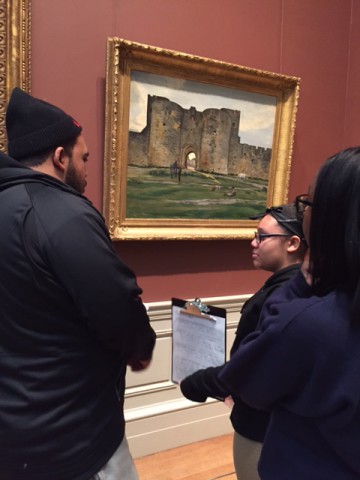

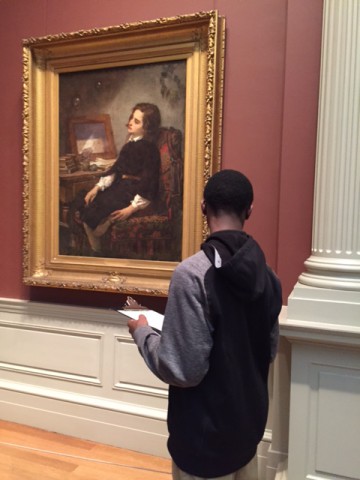

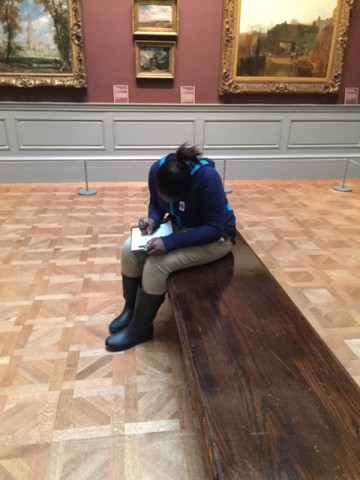
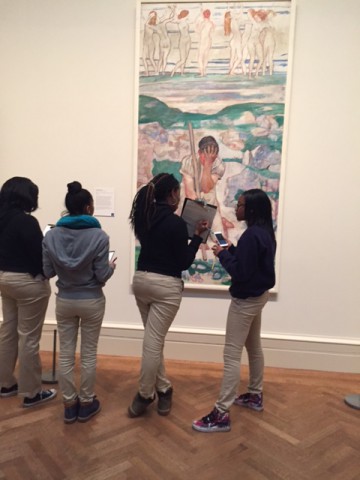
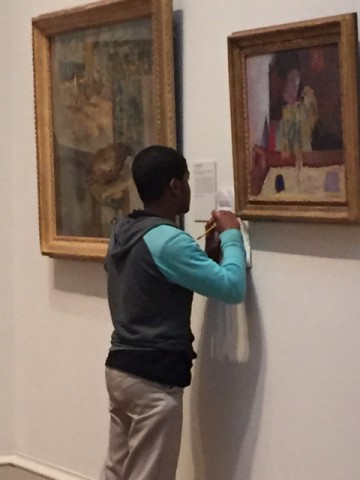
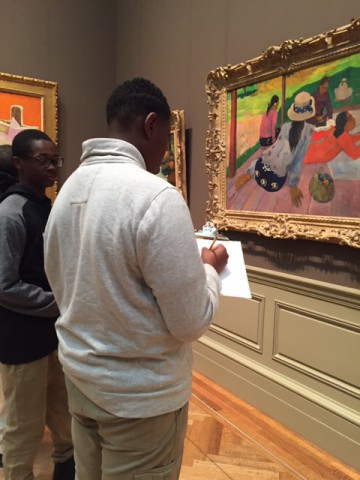
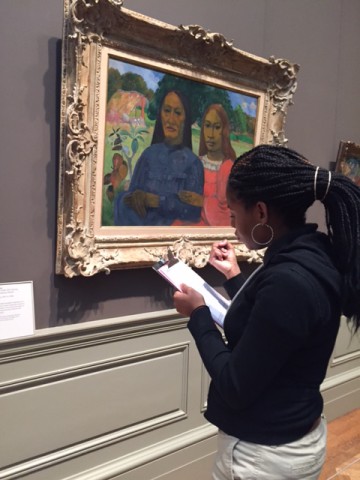
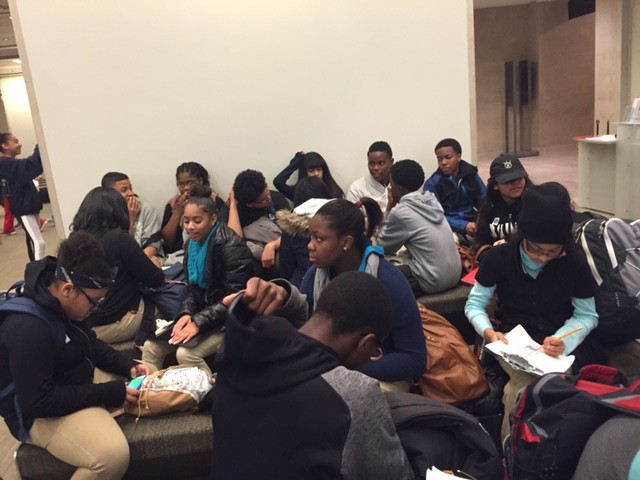
From the online collection:
http://www.metmuseum.org/collection/the-collection-online/search/436534
http://www.metmuseum.org/collection/the-collection-online/search/15583
http://www.metmuseum.org/collection/the-collection-online/search/435693
http://www.metmuseum.org/collection/the-collection-online/search/436534
http://www.metmuseum.org/collection/the-collection-online/search/489502
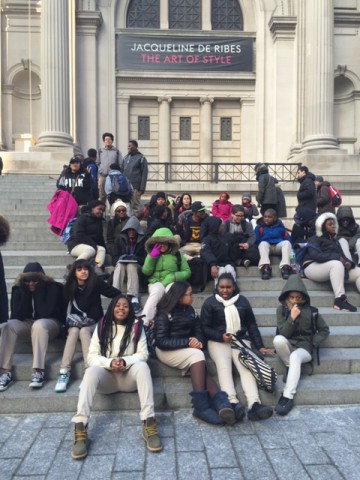
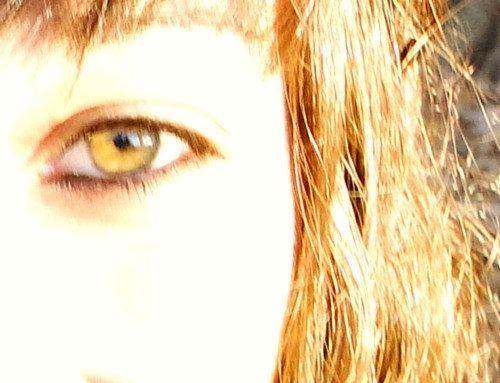

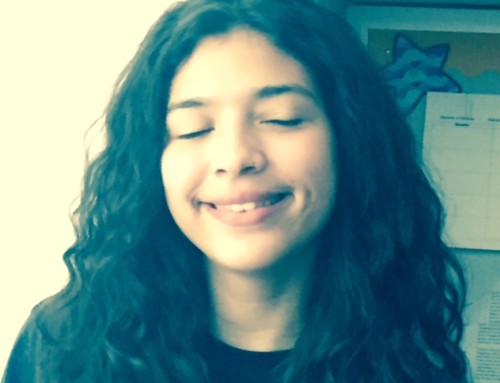

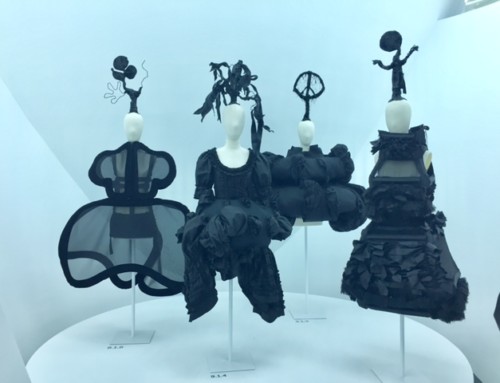
Leave A Comment